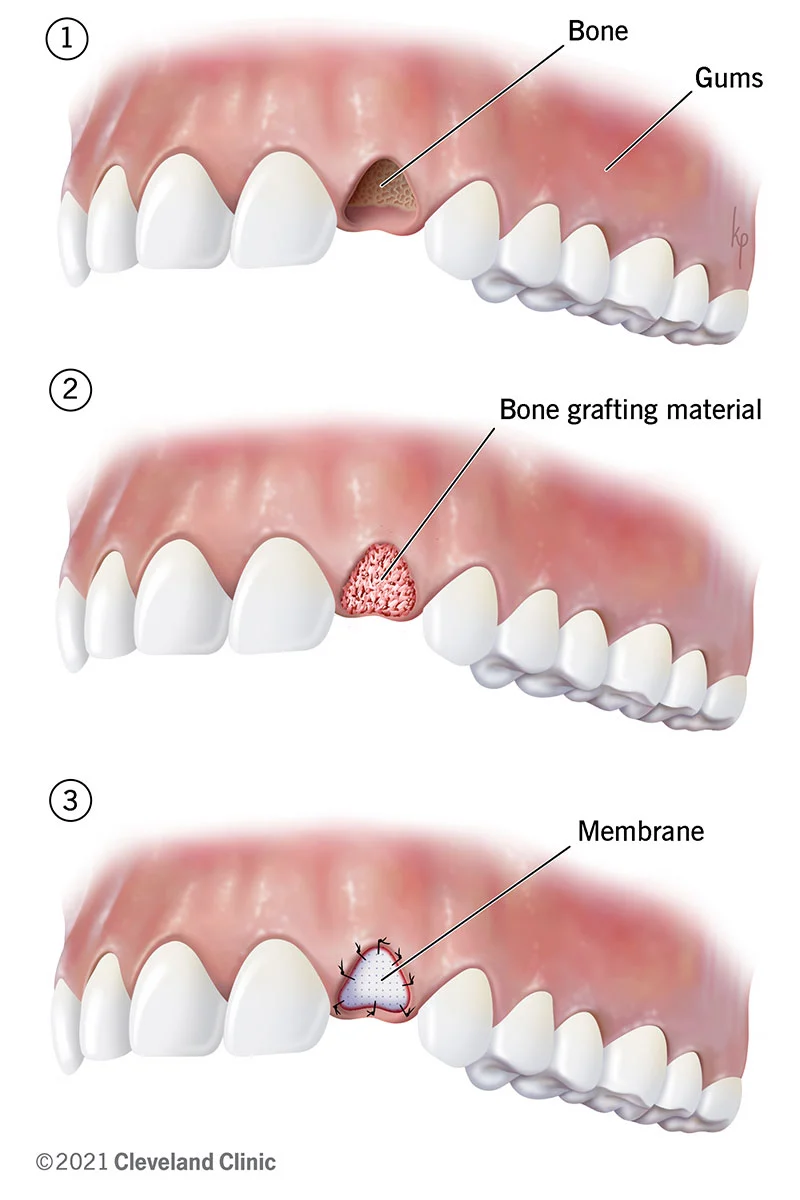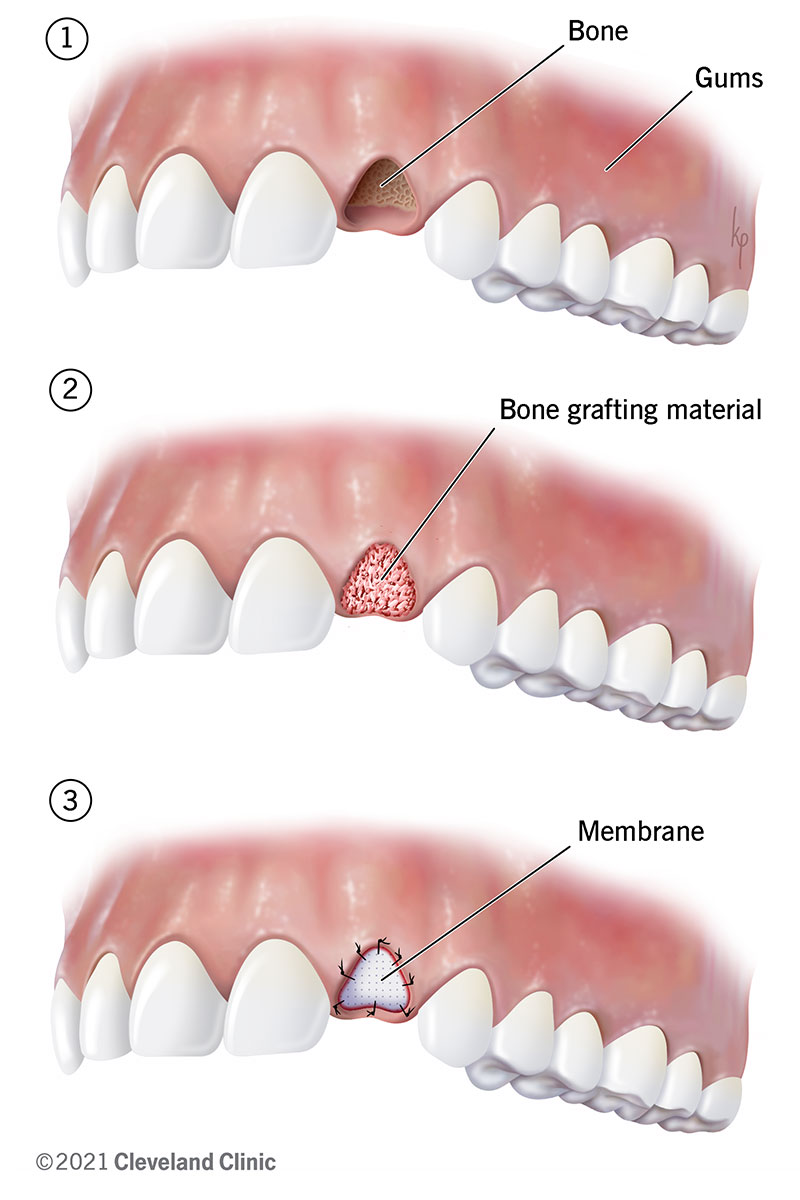
Dental bone grafting, a procedure vital for oral health, is surprisingly fascinating. This process involves placing bone material in areas of jawbone loss, promoting new bone growth and providing a robust foundation for dental implants or other restorative treatments. Impressively, studies report a success rate exceeding 90%, demonstrating positive outcomes and improved oral health for the majority of patients. This procedure not only restores lost bone but also enhances the stability and longevity of dental implants. Success rates, ranging from 85% to 95%, depend on factors like overall health, quality of the graft material, and post-operative care. Consulting a qualified dentist is crucial to determine its suitability for individual cases.
How Successful Is Dental Bone Grafting?
Dental bone grafting is a procedure that has gained significant popularity in recent years. It is a surgical technique that involves adding bone or a bone-like material to the jaw to help restore the bone structure and provide a solid foundation for dental implants. The success of dental bone grafting depends on various factors, including the type of graft material used, the expertise of the dentist, and the patient’s overall oral health.
The Process of Dental Bone Grafting:
- Patient Evaluation:
- A comprehensive examination, including X-rays and CT scans, allows the dentist to assess the extent of bone loss and overall oral health.
- Based on the evaluation, the dentist determines whether bone grafting is necessary to ensure a strong foundation for future dental implants.
- Graft Material Selection:
- Choosing the appropriate graft material is a critical decision. Autografts, utilizing the patient’s own bone, are considered the gold standard due to the body’s high acceptance rate.
- Allografts, sourced from a donor, and xenografts, derived from animals, offer alternatives with different considerations in success rates and potential risks.
- Graft Placement:
- The selected graft material is strategically placed in the area of bone loss, acting as a scaffold for new bone growth.
- This step is vital in creating a stable foundation for future dental implants, enhancing the overall success of the procedure.
- Healing Period:
- Following graft placement, the patient undergoes a healing period during which the graft material fuses with the existing bone.
- This integration process is crucial for the development of a robust foundation that can support dental implants effectively.
Types of Dental Bone Grafts:
- Autografts:
- Considered the gold standard, autografts have the highest success rate (90% to 100%) as the body recognizes the transplanted bone as its own.
- Despite the effectiveness, the use of autografts involves an additional surgical site, potentially leading to increased patient discomfort and recovery time.
- Allografts:
- Allografts, using bone from a donor, eliminate the need for an additional surgical site, offering advantages in terms of patient recovery.
- While having a high success rate (80% to 90%), there is a small risk of immune rejection or disease transmission, which is carefully considered during the decision-making process.
- Xenografts:
- Utilizing bone from animals, xenografts provide an alternative option in dental bone grafting.
- While the success rate is lower compared to autografts and allografts, typically effective in specific cases, they come with minimal risks of immune rejection or disease transmission.
Success Rate of Dental Bone Grafting:
- Graft Material Impact:
- Autografts, with their highest success rate (90% to 100%), are preferred due to the body’s natural acceptance, minimizing the risk of immune rejection.
- Allografts and xenografts also exhibit high success rates (80% to 90%), making them viable alternatives depending on patient-specific considerations.
- Additional Factors:
- The patient’s overall oral health, the expertise of the performing dentist, and post-operative care adherence significantly impact the success of dental bone grafting.
- Patients contribute to the procedure’s success by maintaining good oral hygiene, avoiding smoking, and following post-operative care instructions provided by the dentist.
In conclusion, dental bone grafting is a highly successful procedure for restoring bone structure and providing a solid foundation for dental implants. The success rate depends on factors such as the type of graft material used, the patient’s oral health, and the expertise of the dentist. With proper care and adherence to post-operative instructions, patients can expect a successful outcome and enjoy the benefits of a restored smile.
Key Takeaways: How Successful Is Dental Bone Grafting?
- Dental bone grafting is a commonly performed procedure to restore or enhance the jawbone for dental implants.
- Success rates for dental bone grafting can vary depending on factors such as the patient’s overall health and the specific technique used.
- Generally, dental bone grafting has a high success rate of around 90-95%.
- Complications are rare but can include infection, graft failure, or damage to surrounding structures.
- Proper post-operative care and following your dentist’s instructions are crucial for the success of dental bone grafting.
Frequently Asked Questions
How long does it take for dental bone grafting to be successful?
When it comes to the success of dental bone grafting, the healing process can vary depending on various factors. Generally, it takes around three to six months for the graft to fully integrate with the existing bone and become successful. However, it’s important to note that each case is unique and the healing time can differ for individuals.
During the initial healing phase, it is crucial to follow the post-operative instructions provided by your dentist or oral surgeon. This may include avoiding certain foods, maintaining good oral hygiene, and attending follow-up appointments to monitor the progress. By following these guidelines, you can enhance the success of the bone grafting procedure.
What is the success rate of dental bone grafting?
The success rate of dental bone grafting is generally high, with studies reporting success rates ranging from 90% to 95%. However, it’s important to note that the success of the procedure can vary depending on factors such as the individual’s overall health, the quality of the bone graft material used, and the skill of the dental professional performing the procedure.
While dental bone grafting is considered a safe and effective treatment option for restoring bone in the jaw, there is always a slight risk of complications or graft failure. It’s important to consult with a qualified dental professional who can assess your specific situation and provide personalized guidance on the success rate of the procedure.
What factors can affect the success of dental bone grafting?
Several factors can influence the success of dental bone grafting. One crucial factor is the overall health of the patient. Certain medical conditions, such as diabetes or autoimmune disorders, can affect the body’s ability to heal and may increase the risk of graft failure.
The quality and type of bone graft material used can also impact the success of the procedure. Synthetic grafts, allografts (bone from a donor), and autografts (bone from the patient) have different success rates. Additionally, the skill and experience of the dental professional performing the procedure play a significant role in the success of the bone grafting.
Are there any risks or complications associated with dental bone grafting?
Like any surgical procedure, dental bone grafting carries some risks and potential complications. These can include infection, bleeding, graft rejection, and nerve damage. However, these complications are relatively rare and can be minimized by choosing a skilled and experienced dental professional.
It’s crucial to discuss the potential risks and complications with your dentist or oral surgeon before undergoing the procedure. They will be able to assess your specific situation, provide personalized advice, and take necessary precautions to minimize the risks.
How long does the recovery process take after dental bone grafting?
The recovery process after dental bone grafting can vary depending on the individual and the extent of the procedure. Generally, it takes a few days to a week for the initial healing of the surgical site. During this time, it’s important to follow post-operative instructions, such as avoiding strenuous activities and maintaining good oral hygiene.
Complete healing and integration of the bone graft can take several months. It’s important to attend follow-up appointments with your dental professional to monitor the progress and ensure a successful outcome. By following the recommended aftercare guidelines and being patient with the healing process, you can support a smooth and successful recovery.
Final Summary: The Success of Dental Bone Grafting
When it comes to dental procedures, one question that often arises is, “How successful is dental bone grafting?” Well, let me tell you, it’s a game-changer! Dental bone grafting has proven to be highly successful in restoring missing bone and creating a solid foundation for dental implants.
In conclusion, dental bone grafting is a remarkable procedure that has revolutionized the field of dentistry. Not only does it provide a solution for individuals with insufficient bone structure, but it also enhances the success rate of dental implants. So, if you’re considering dental bone grafting, rest assured that the results speak for themselves – a healthier and more confident smile awaits you! Remember, always consult with a dental professional to determine if dental bone grafting is the right option for you.
Call or Book appointment online
:Ace Dental Care Alpharetta office: 678-562-1555 - Book Now
Ace Dental Care Norcross office: 770-806-1255 - Book Now
Disclaimer
This blog post was generated by artificial intelligence. The content of this post may not be accurate or complete, and should not be relied upon as a substitute for professional advice. If you have any questions about the content of this post, please contact us.
We are constantly working to improve the accuracy and quality of our AI-generated content. However, there may still be errors or inaccuracies. We apologize for any inconvenience this may cause.






